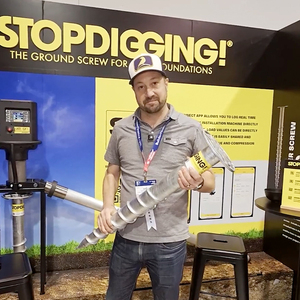The Pryne bath exhaust fan needs a new motor. At least I assume. The fan is more than 50 and maybe even 60 years old. The Pryne company no longer exist. Installing a new fan would require replacing the whole, tiled and sagging ceiling over the tub. I removed the fan assembly, cleaned it and plugged in the motor by itself. At first it would not spin then started spinning slowly then went to its normal speed. I figured maybe all it needed was cleaning–it also has two ports(?) and instruction on the motor that says it needs oil every 2 months. But when it was spinning for about 15 minutes, the housing became too hot to touch. I assume this means the motor needs repair. By the way, the motor is made by Universal Electric Western company, and it is enclosed motor, not like open motors these days where copper windings are visible. Search of this company shows no answers.
Panasonic low profile lists its motor as enclosed but I can’t just buy it to see if I can use the motor and nobody is willing to open the box without restocking charge.
Can you recommend anybody who will rebuild old, obscure motor like this? Thank you in advance.
Discussion Forum
Discussion Forum
Up Next
Video Shorts
Featured Story

A high-performance single-family home builder shares tips from his early experience with two apartment buildings.
Highlights
"I have learned so much thanks to the searchable articles on the FHB website. I can confidently say that I expect to be a life-long subscriber." - M.K.
Fine Homebuilding Magazine
- Home Group
- Antique Trader
- Arts & Crafts Homes
- Bank Note Reporter
- Cabin Life
- Cuisine at Home
- Fine Gardening
- Fine Woodworking
- Green Building Advisor
- Garden Gate
- Horticulture
- Keep Craft Alive
- Log Home Living
- Military Trader/Vehicles
- Numismatic News
- Numismaster
- Old Cars Weekly
- Old House Journal
- Period Homes
- Popular Woodworking
- Script
- ShopNotes
- Sports Collectors Digest
- Threads
- Timber Home Living
- Traditional Building
- Woodsmith
- World Coin News
- Writer's Digest


















Replies
M&R electric in Dayton Ohio would repair it.
Thank you. They have a website and I will try them if I can't get the motor matched by Grangers as recommended by another post.
I've taken motors into Granger's, they can usually match them to something they have in stock. Mounting brackets can be taken off the old motor and put on the new.
Don't know if it would work for you, but I've had several "no longer available" motors matched this way. Sure beats tearing out the whole fan unit and putting in another.
John Svenson, builder, remodeler, NE Ohio
Thank you. I didn't even think about Grangers.
The bearings being bad or just gunked up, and causing the motor to not spin freely is causing the heat, through friction in the bearings, and the increased load the motor is seeing trying to overcome the extra resistance. It is highly probable that the motor has never been oiled before, and really just needs a good cleaning, and new lubrication.
If it were me I would disassemble the motor, clean it up well, and lubricate it with some of the Dupont "Teflon Multi-Use Lubricant", or a similar wax/teflon lubricant. (Amazon has it, just search for it.)
Also, the motor was most likely mounted in the air stream of the fan, and thus fan cooled. You running it with out that air flow is also keeping the heat generated in the motor.
Yeah, very often it's just gummed bearings, and cleaning/lubing them will fix it, at least for another year or two.And keep in mind that these motors tend to run pretty hot. Unless it's hot enough to smell it's probably OK.
The modern conservative is engaged in one of man's oldest exercises in moral philosophy; that is, the search for a superior moral justification for selfishness. -John Kenneth Galbraith
You probably want a small motor rewind shop, the kind with guys who know what they're doing...look in the yellow pages, you'll want the guys who rebuild electric tools as well, not the guys who specialize in 400 hp motors. They'll either be able to repair or replace it.
As others have said, first check if it turns freely and oil it if not. Nothing special, WD40 or even old motor oil will work for 5 years.
If the winding truly is fried, again, as others have said, there are tens of thousands of replacement motors available.
Last resort, send me the motor and $1K and I'll rewind it for you<G>
Seriously, (for $1K I would, take me a couple of hours and $5 worth of wire though) you could learn a lot about motors rewinding it yourself (NOT cost effective the first time, but think of the learning!). All you need to do is just take the old motor apart, pull a couple of windings out of the stator and measure. Put 4 nails in a board the same dimensions as the windings and count the old # of turns. Now, get some magnet wire (radio shack, grainger again, etc.) and wind the same number of turns around the nails. Shove the wires into the motor slots.
First time I did this 35 years ago when my RAS burnt out (and motor was $200 even back then, more than a new saw!!) . Was able to get a full gauge larger wire into the slots, still using that saw.
edit PS: do you want any advice on using an old big pressure cooker as a vacuum pot to impregnate the winding so they would be good enough reliability to use on the space station <G>
EDIT #2 - please fill in your profile : no profile. If you are under 30 YO* and live in Seattle area, e-mail me, I'll invite you over and show you (for free, and give you the wire) how to rewind the motor.
* if over 30, you should know how to do this already <G>
Edited 3/14/2009 4:40 pm ET by junkhound
Edited 3/14/2009 4:43 pm ET by junkhound
The problem with simple rewinding is that often these small motors overheat because the insulation between laminations is shot, and there's no good way to replace that.
The modern conservative is engaged in one of man's oldest exercises in moral philosophy; that is, the search for a superior moral justification for selfishness. -John Kenneth Galbraith
insulation between laminations is shot
please explain - have never seen that occurance, oxide degrade?>
The laminations of the motor and stator are insulated from adjacent ones by a coating of lacquer or some such. (In old motors & transformers there's actually a layer of tissue paper there.) Over time the vibration from 60Hz combined with thermal expansion/contraction wears away the insulation, allowing the laminations to short to adjacent ones. This causes inductive losses and heating.
The modern conservative is engaged in one of man's oldest exercises in moral philosophy; that is, the search for a superior moral justification for selfishness. -John Kenneth Galbraith
a layer of tissue paper there.)
Now. that is one a'hv' never seen, and thought I'd seen all. Never have seen eddy currents between laminations, my experience is the oxide layer on silicone steel grows, vs.'shorts'...
LOL, thank you. I am in NJ. After hearing that it might cost about $200 to repair the motor I did think about picking up a book about motor repair. I'm in the process of learning simple repairs on F150 with Haynes manual. The motor still spins without noise after all these years. I am not sure if this means the bearings are still good, but I am going to try oil and running it for an hour. If it doesn't have a melt down then I plan to reinstall it and see if it lasts. I also plan to see if Grangers have reasonably priced new motor. I know nothing about motors but I remember seeing on tv show how important insulators were in the motor. Thank you to all for suggestions.
Basically four things that can happen to a small induction motor: Bearings gum up, bearings wear out, laminations short out, or the windings short out.Keep in mind that there are windings on both the stator and the rotor, though sometimes the windings on the rotor are hard to discern since they're run through holes in the rotor laminations.
The modern conservative is engaged in one of man's oldest exercises in moral philosophy; that is, the search for a superior moral justification for selfishness. -John Kenneth Galbraith
Had a kitchen vent hood fan motor cease working last year in a 1952 model rental house. Original vent hood. Took the motor to Grainger, they pulled one off the shelf, exact match, except I had to cut the shaft down.
They might surprise you.
Greg
I had an old cast iron Hunter ceiling fan that did the same thing. One day it just wouldn't budge even when I spun it over by hand. I figured I had nothing to lose so I took it apart, pulled the shaft which was thick with crud, cleaned, oiled and reinstalled it. That was probably 10 years ago and it still purrs like a kitten.